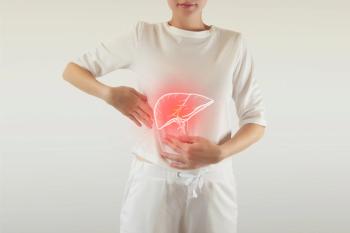
- November/December 2025
- Volume 41
- Issue 8
Artificial sweeteners show mixed effects on diabetes management
A review highlights the benefits and risks of artificial sweeteners in glycemic control, insulin sensitivity, and gut microbiota balance.
A comprehensive review published in Frontiers in Nutrition evaluated the complex relationship between artificial sweeteners and diabetes management, underscoring both their potential benefits for glycemic control and concerns over long-term metabolic and gut-related effects.1
The authors examined preclinical and clinical evidence to assess how commonly used nonnutritive sweeteners—including aspartame, sucralose, saccharin, and stevia—affect glucose metabolism, insulin signaling, and gut microbiota composition.1
“Artificial sweeteners, due to their low caloric content and minimal impact on blood glucose levels, offer promising potential as sugar substitutes for individuals aiming to manage glycemic control,” the authors wrote.
Rising prevalence of diabetes
The review opened by emphasizing the public health burden of diabetes, which affects over 800 million adults globally, a figure that has quadrupled since 1990.2 The authors noted that more than half of cases occur in low- and middle-income countries where access to essential care remains limited. In 2021, diabetes was linked to approximately 6.7 million deaths worldwide and nearly $1 trillion in health care expenditures.3
“Effective management of diabetes encompasses not only medical interventions but also lifestyle and dietary modifications,” the authors stated.
Reducing sugar intake remains a cornerstone of glycemic control. Artificial sweeteners, as low-calorie alternatives, have gained widespread use in food and beverage products aimed at individuals with diabetes or obesity.4 However, as the authors noted, “Despite their popularity, artificial sweeteners remain under scrutiny for possible effects on metabolism, insulin sensitivity, and appetite.”
Mechanisms of action: Mimicking sweetness without hyperglycemia
Artificial sweeteners replicate the taste of sugar without increasing blood glucose. Compounds such as aspartame and sucralose bind to sweet taste receptors on the tongue and in the gut, activating pathways involved in sweetness perception while bypassing carbohydrate metabolism.1
Research cited in the review suggests that long-term consumption of some sweeteners may affect vascular function and adipose storage in animal models, potentially influencing insulin sensitivity.5 For example, chronic exposure to acceptable daily intake levels of certain sweeteners led to “vascular endothelial dysfunction and increased adipose tissue storage in healthy rats,” which could impair glycemic regulation.
Conversely, natural sweeteners such as Stevia rebaudiana and its derivatives were reported to exert beneficial metabolic effects. Steviol glycosides, particularly stevioside and rebaudioside A, have been linked to improved glucose tolerance, reduced oxidative stress, and modulation of inflammatory pathways. The authors noted, “Stevia is a safe, nontoxic alternative to artificial sweeteners, used in foods, drinks, and supplements.”1
Influence on glucose and insulin responses
Clinical findings on glucose metabolism and insulin sensitivity remain inconsistent. Some studies show that replacing sucrose with nonnutritive sweeteners reduces postprandial glucose levels and hemoglobin A1C (HbA1C)without adverse effects.6 Others demonstrate potential adverse impacts on gut microbiota and glucose tolerance, depending on the sweetener type, dose, and population studied.
The review cited evidence that sucralose and saccharin may activate intestinal sweet taste receptors (T1R2/T1R3), increasing expression of glucose transporters SGLT1 and GLUT2 and thereby influencing intestinal glucose absorption.7
In contrast, stevia appears to be metabolically neutral or beneficial, with data suggesting it may enhance insulin sensitivity without increasing glucose levels. In animal studies, stevioside improved glucose tolerance and reduced oxidative stress through “epigenetic, oxidative stress and inflammatory regulation,” while nanoformulations of stevia showed enhanced bioavailability and efficacy in experimental diabetes models.8
Human data remain variable. In a 12-week clinical trial, replacing sucrose with aspartame significantly lowered HbA1C in individuals with type 2
diabetes without causing adverse metabolic outcomes. Similarly, a review of multiple randomized studies concluded that “artificial sweeteners like sucralose have negligible effects on both fasting blood glucose and postprandial glucose responses.”9
However, other studies noted that frequent consumption may alter gut microbiota or appetite signaling. One report found that saccharin disrupted glucose balance in rats by reducing glucagon-like peptide-1 (GLP-1) release, suggesting that “saccharin may interfere with the link between sweet taste and caloric intake, potentially leading to hyperglycemia and weight gain.”10
Effects on gut microbiota and metabolic health
A major theme of the review was the interaction between artificial sweeteners and the gut-brain axis. The authors noted that changes in gut microbiota composition could be key to understanding the metabolic variability observed in human studies.1
“Emerging evidence suggests that artificial sweeteners may influence gut microbiota, potentially affecting metabolic outcomes and insulin sensitivity,” they wrote.
Preclinical research shows that artificial sweeteners can modify intestinal microbial communities, sometimes reducing the abundance of beneficial bacteria such as Lactobacillus and Bifidobacterium. Such dysbiosis has been associated with impaired glucose tolerance, low-grade inflammation, and insulin resistance.11,12
In one cited study, long-term exposure to saccharin led to microbial shifts associated with “impaired glucose tolerance and decreased insulin sensitivity.” Other studies suggest that the magnitude of these effects may depend on an individual’s baseline microbiome and genetic factors, raising the possibility of personalized dietary approaches.13
Clinical implications and limitations
Clinical evidence generally supports the short-term safety of artificial sweeteners when consumed within established acceptable daily intake limits. According to the review, “Regular consumption of artificial sweeteners
for 4 weeks did not significantly affect glycemic response, insulin sensitivity, GLP-1 secretion, or body weight in healthy individuals.”14
However, the authors cautioned that effects may differ in vulnerable populations, including pregnant women and children. In one study of Chilean women, sucralose use during pregnancy was associated with increased risk of gestational diabetes. Similarly, early-life exposure to artificial sweeteners has been shown in animal models to alter taste preferences and metabolic outcomes later in life.15
Care givers, the authors emphasized, “are advised against adding sweeteners to foods for infants and young children and are encouraged to develop expertise in selecting suitable sweeteners.”1
Risk–benefit considerations and future directions
a tool for reducing caloric and sugar intake, their long-term metabolic consequences remain uncertain. The authors noted that chronic exposure has been “linked to metabolic imbalances, insulin resistance, and appetite disruptions,” although causal mechanisms remain under investigation.1
Potential behavioral effects—such as reinforcing sweet preferences or promoting compensatory eating—were also highlighted. The review recommended integrating artificial sweeteners into broader lifestyle interventions that include balanced nutrition and regular physical activity rather than using them as unrestricted substitutes for sugar.1
The authors called for additional long-term studies to clarify safety, noting that future research should “focus on creating new sweeteners that reduce metabolic risks while maintaining taste and stability in food.” They emphasized the role of personalized nutrition strategies, which could align sweetener use with an individual’s gut microbiota profile and metabolic response.1
In conclusion, Begum et al wrote, “Artificial sweeteners are especially useful in diabetes management when combined with personalized strategies that account for gut health and insulin dynamics.” They stressed that although artificial sweeteners can support blood glucose control and weight management, “they should not be seen as a one-size-fits-all solution.”1
References
- Begum RF, Nirenjen S, Rushendran R, et al. Exploring the impact of artificial sweeteners on diabetes management and glycemic control. Front Nutr. 2025;12:1587690. doi:10.3389/fnut.2025.1587690
- Banday MZ, Sameer AS, Nissar S. Pathophysiology of diabetes: an overview. Avicenna J Med. 2020;10(4):174-188. doi:10.4103/ajm.ajm_53_20
- Wu H, Norton V, Cui K, et al. Diabetes and its cardiovascular complications: comprehensive network and systematic analyses. Front Cardiovasc Med. 2022;9:841928. doi:10.3389/fcvm.2022.841928
- Skerrett PJ, Willett WC. Essentials of healthy eating: a guide. J Midwifery Womens Health. 2010;55(6):492-501. doi:10.1016/j.jmwh.2010.06.019
- Risdon S, Meyer G, Marziou A, Riva C, Roustit M, Walther G. Artificial sweeteners impair endothelial vascular reactivity: preliminary results in rodents. Nutr Metab Cardiovasc Dis. 2020;30(5):843-846. doi:10.1016/j.numecd.2020.01.014
- Anton SD, Martin CK, Han H, et al. Effects of stevia, aspartame, and sucrose on food intake, satiety, and postprandial glucose and insulin levels. Appetite. 2010;55(1):37-43. doi:10.1016/j.appet.2010.03.009
- Li X, Staszewski L, Xu H, Durick K, Zoller M, Adler E. Human receptors for sweet and umami taste. Proc Natl Acad Sci U S A. 2002;99(7):4692-4696. doi:10.1073/pnas.072090199
- Dandin E, Üstündağ ÜV, Ünal İ, et al. Stevioside ameliorates hyperglycemia and glucose intolerance, in a diet-induced obese zebrafish model, through epigenetic, oxidative stress and inflammatory regulation. Obes Res Clin Pract. 2022;16(1):23-29. doi:10.1016/j.orcp.2022.01.002
- Bonnet F, Tavenard A, Esvan M, et al. Consumption of a carbonated beverage with high-intensity sweeteners has no effect on insulin sensitivity and secretion in nondiabetic adults. J Nutr. 2018;148(8):1293-1299. doi:10.1093/jn/nxy100
- Swithers SE, Laboy AF, Clark K, Cooper S, Davidson TL. Experience with the high-intensity sweetener saccharin impairs glucose homeostasis and GLP-1 release in rats. Behav Brain Res. 2012;233(1):1-14. doi:10.1016/j.bbr.2012.04.024
- Gerasimidis K, Bryden K, Chen X, et al. The impact of food additives, artificial sweeteners and domestic hygiene products on the human gut microbiome and its fibre fermentation capacity. Eur J Nutr. 2020;59(7):3213-3230. doi:10.1007/s00394-019-02161-8
- Palmnäs MS, Vogelzang M, Molin G. Gut microbiota in prediabetes and diabetes: a population-based cross-sectional study. BMJ Open Diabetes Res Care. 2014;2:e000056. doi:10.1136/bmjdrc-2014-000056
- Sala P, Corrêa-Giannella ML, Waitzberg DL. Bariatric surgery and gene expression in the gut. Curr Opin Clin Nutr Metab Care. 2018;21(4):246-251. doi: 10.1097/MCO.0000000000000481
- Orku SE, Suyen G, Bas M. The effect of regular consumption of four low- or no-calorie sweeteners on glycemic response in healthy women: a randomized controlled trial. Nutrition. 2023;106:111885. doi:10.1016/j.nut.2022.111885
- Campos P, Rebolledo N, Durán S, Flores M, Reyes M, Garmendia ML. Association between consumption of non-nutritive sweeteners and gestational diabetes mellitus in Chilean pregnant women: a secondary data analysis of the CHiMINCs-II cohort. Nutrition. 2024;128:112560. doi:10.1016/j.nut.2024.112560
Articles in this issue
9 days ago
Novel therapies for type 1 diabetesNewsletter
Access practical, evidence-based guidance to support better care for our youngest patients. Join our email list for the latest clinical updates.













